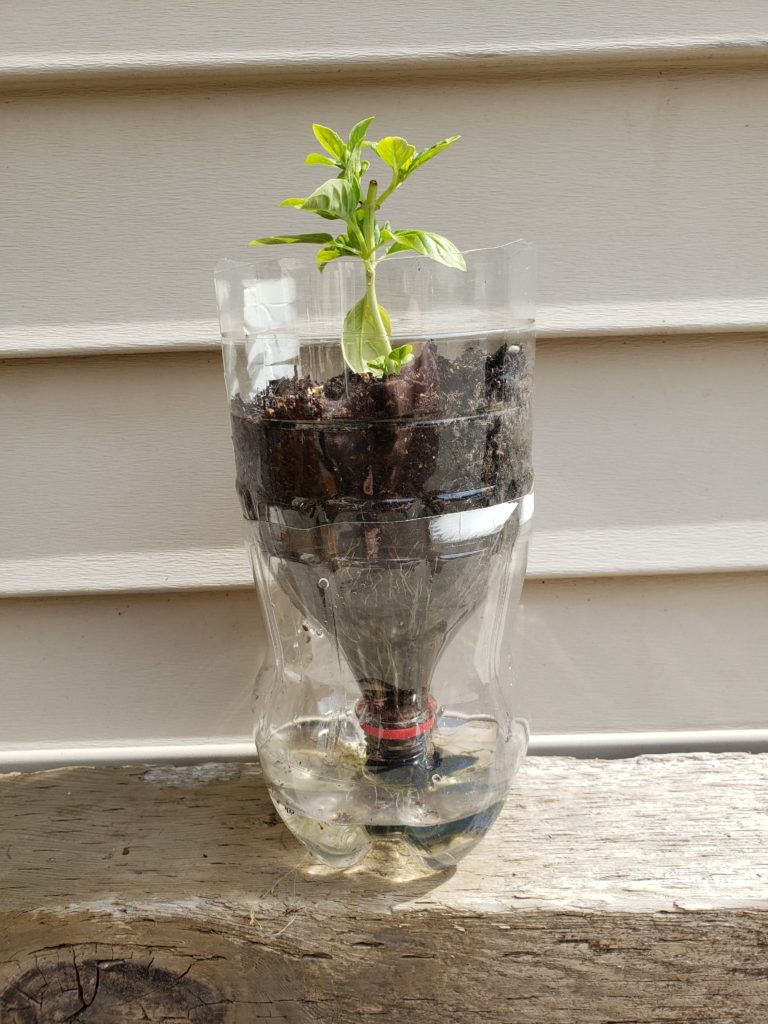In this activity students will explore capillary action and osmosis by making a simple recycled self-watering planter from a pop bottle.
A self-watering planter has four main parts:
- the plant
- the soil and pot
- the reservoir (to hold water)
- the wick (fabric or string to connect the reservoir to the soil).
Once put together, water will be able to move up the wick and into the soil from the reservoir by capillary action.
The cloth of the wick is made of many tiny fibres with spaces in between, water molecules will stick to each other (cohesion) and stick to the fibres (adhesion) to fill the spaces between fibres.
Water tends to move from areas of more water to areas of less water (osmosis). When water is lost due to evaporation from leaves, it is replaced as plant roots pull water from the soil. In this planter, water is moved into the soil out of the reservoir via the wick.
Definitions:
Capillary action or wicking: the ability of a liquid to flow in narrow spaces without the assistance of, or even in opposition to, external forces like gravity.
Cohesion: The attraction of water molecules to each other. Water molecules tend to stick to each other in a regular pattern due to the extensive hydrogen bonding. This phenomenon, called cohesion, is easily observed when you carefully overfill a glass with water (by just a little bit!) and observe the water molecules holding together above the rim; this is called a meniscus (eventually, however, gravity overcomes the hydrogen bonds and the water molecules spill down the side of the glass). Likewise, the cohesive property of water allows tall trees to bring water to their highest leaves from underground sources.
Adhesion: the attraction of water molecules to other substances. This is the reason water “sticks” to surfaces and makes things “wet”.the attraction of water molecules to other substances. This is the reason water “sticks” to surfaces and makes things “wet”.
Osmosis: the movement of water from an area with more water to an area of less water, through a selectively permeable membrane.
Evaporation: the process by which water changes from a liquid to a gas or vapour.

 copy.jpg)